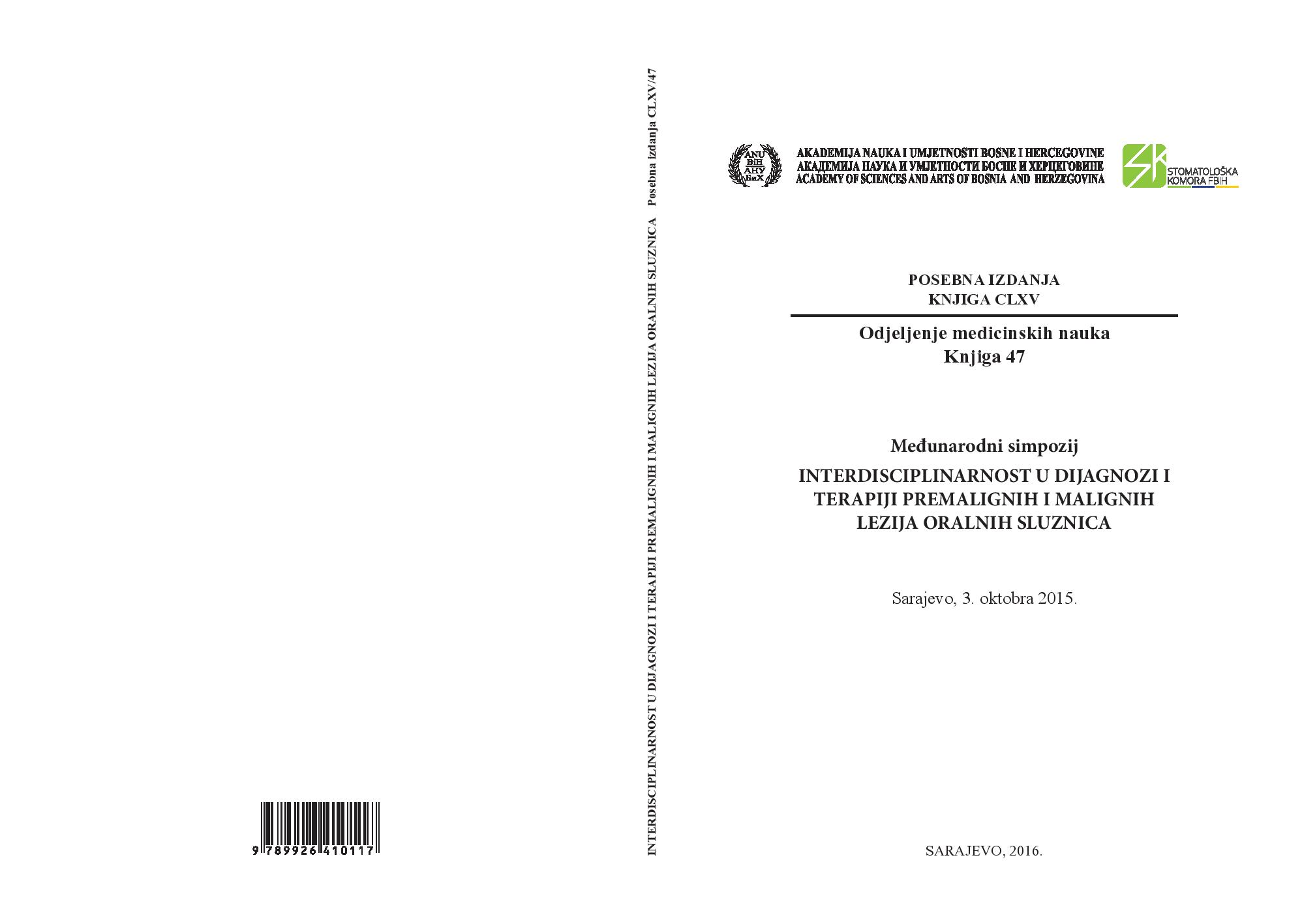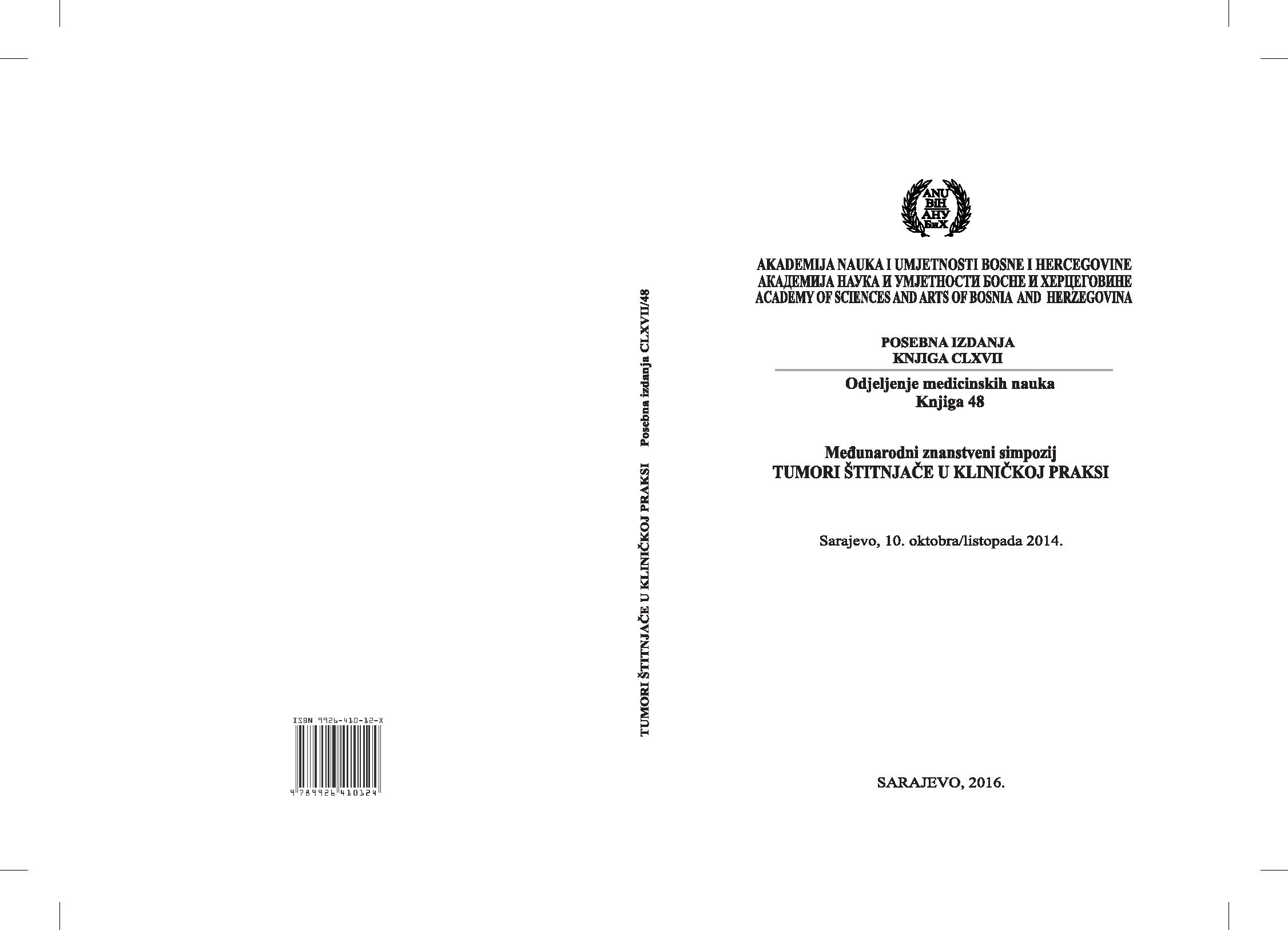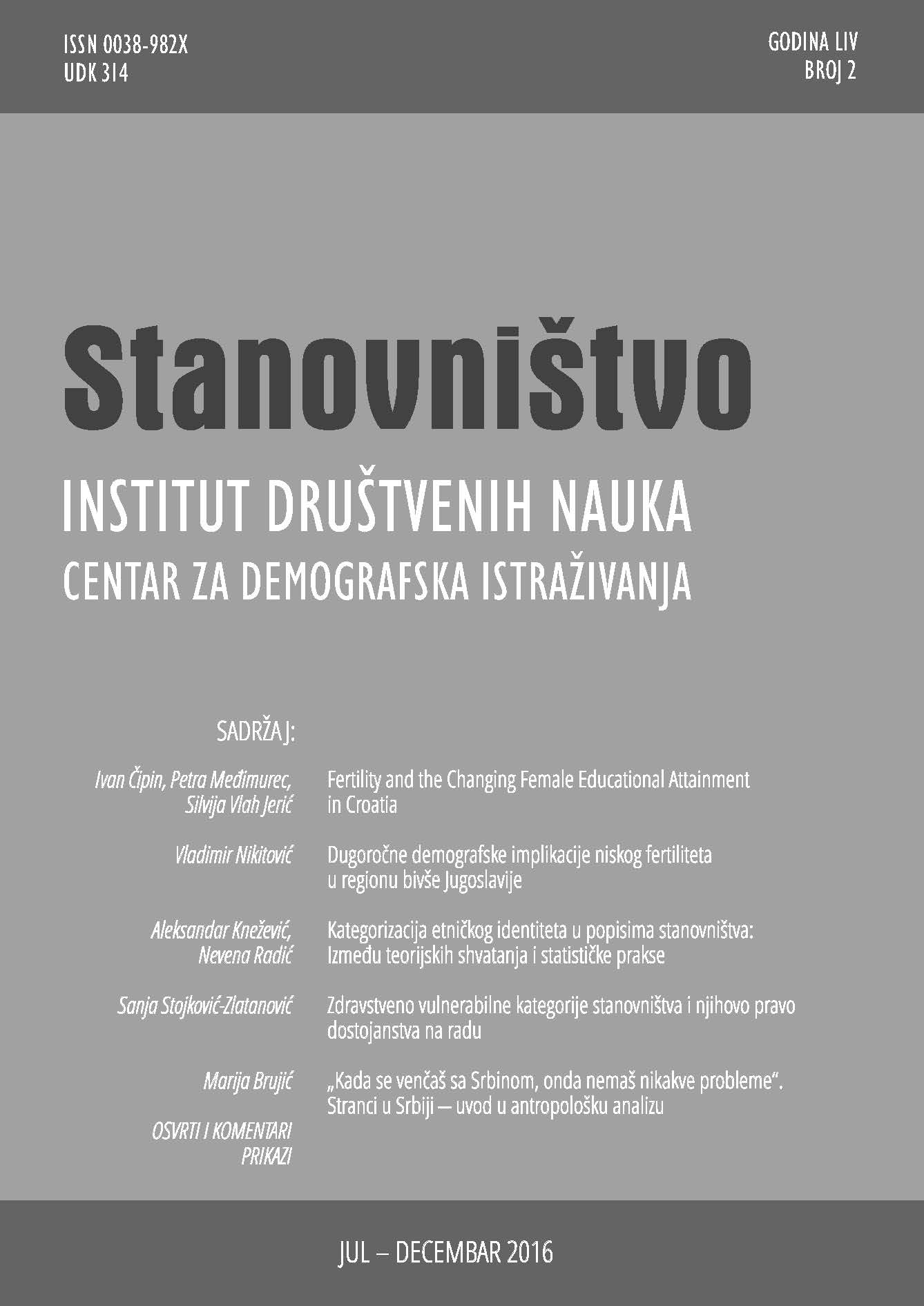
OSVRT NA TRENDOVE MALIGNIH NEOPLAZMI U FEDERACIJI BIH U PERIODU 2004-2014. GODINE
Introduction: Register for cancer in Federation of B&H was established in 2004 as a special activity for gathering, analysis and interpretation of data on every new cancer case in Federation area, trough given time period. Objective:To show data on disease and deaths caused by cancer in Federation of B&H in period from 2004 to 2014 as a result of establishment and activity of Register for cancer. Methodology: This paper uses data from Register on persons diagnosed with cancer (except skin cancer) in period from 2004 to 2014 and data on mortality statistic by Federal Statistic Institute. The methodology is analytical.Results: Cancer appearance average rate in period from 2004 to 2014 for women is 203.9/100000, and for women is 179,2/100000. The average age of registred deseased is 62 years of age. Conclusion: Population Register for cancer enables cancer threat assessment of society (incidence, mortality), analysis of time trends(age, gender, place), as well as detection of weaknesses in quality of registration and the need for correction it. It is insufficiency of reporting malignant neoplasms of the ten cantonal institutions in the Federation of B&H (number of different data sources), and hence longer waiting on the intergration of results in a research year (visible in the results for 2014).
More...



